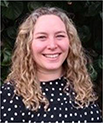Seismic imaging in shallow water: where are we at and where might we be going?
Henry A. Debens A * , Robert Eliott-Lockhart A and Jennifer Moss AA

Henry Debens has worked at Woodside Energy since 2016, where his current position is Senior Geophysicist. Henry holds an MSci in geophysics and a PhD in petroleum geophysics from Imperial College London. |

Robert Eliott-Lockhart has worked at Woodside Energy since 2001, where his current position is Principal Geophysicist. Rob holds a Bachelor of Applied Science (Honours) in geophysics from Curtin University. |

Jennifer Moss has worked at Woodside Energy since 2011, where her current position is Senior Geophysicist. Jenny holds an MSc in geomorphology from the University of Oxford and a PhD in seismic interpretation from Cardiff University. |
Abstract
The Galactic 2D Seismic Imaging Study (November 2023–June 2024) sought to assess and understand what is achievable as of today and what may soon be achievable when exploring in geophysically challenging shallow-water marine regions with 2D seismic data of limited quality – in this instance, using data acquired over one such region offshore Australia’s Northern Territory. This was approached first by comparing the outputs of a commercially available state-of-the-art depth-imaging workflow as applied by four seismic processing services companies (Phase 1). Whilst broadly in agreement, the outputs of this first exercise vary significantly in some respects. An anonymised subset of the deliverables was independently assessed by a group of seismic interpreters to provide the perspective of the end user, where no one set of deliverables was found to clearly outperform the others in all aspects. These results were then contrasted against a suite of novel but under-development approaches to seismic imaging and model building, as applied by two tech startups and two academic groups (Phase 2). Whilst the potential for several of these promising technologies to either reduce cost, shorten turnaround, or improve imaging quality has been previously demonstrated when working with deep-water data, the outputs generated suggest that the additional challenges that shallow-water data entail necessitate further development before any of them might potentially supersede conventional workflows.
Keywords: Bonaparte Basin, full-waveform inversion, machine learning, multiple suppression, offshore exploration, reverse-time migration, seismic imaging, seismic processing.
 Henry Debens has worked at Woodside Energy since 2016, where his current position is Senior Geophysicist. Henry holds an MSci in geophysics and a PhD in petroleum geophysics from Imperial College London. |
 Robert Eliott-Lockhart has worked at Woodside Energy since 2001, where his current position is Principal Geophysicist. Rob holds a Bachelor of Applied Science (Honours) in geophysics from Curtin University. |
 Jennifer Moss has worked at Woodside Energy since 2011, where her current position is Senior Geophysicist. Jenny holds an MSc in geomorphology from the University of Oxford and a PhD in seismic interpretation from Cardiff University. |


